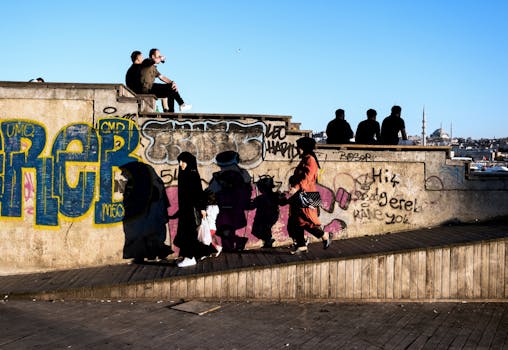
Cultural Fusion: Embracing Diversity in European Lifestyles by 2025
Cultural fusion, the blending of different cultural practices, traditions, and values, is becoming increasingly prevalent in European lifestyles. As the continent becomes more diverse, Europeans are embracing this fusion, creating a unique and dynamic cultural landscape. By 2025, cultural fusion is expected to have a profound impact on European lifestyles, promoting diversity, inclusion, and a richer cultural tapestry.
What is Cultural Fusion?
Cultural fusion refers to the process of combining different cultural elements, such as music, art, literature, and cuisine, to create something new and unique. This can occur between different ethnic or national groups, or between different social classes or age groups. Cultural fusion can take many forms, including the creation of new musical genres, the fusion of different culinary traditions, or the development of new artistic styles.
Benefits of Cultural Fusion
Cultural fusion has numerous benefits, including the promotion of diversity, inclusion, and creativity. By embracing different cultural practices and traditions, individuals can broaden their perspectives, challenge their assumptions, and develop a more nuanced understanding of the world. Cultural fusion can also foster innovation, as the combination of different cultural elements can lead to the creation of new products, services, and ideas.
Examples of Cultural Fusion in Europe
Europe is home to a diverse range of cultures, and cultural fusion is occurring in many different contexts. For example, in the UK, there is a thriving scene of Asian-British fusion cuisine, which combines traditional British dishes with Asian spices and ingredients. In France, there is a rich tradition of African-French cultural fusion, which is reflected in the country’s music, art, and literature. In Germany, there is a growing trend of Turkish-German cultural fusion, which is evident in the country’s cuisine, fashion, and architecture.
Challenges and Opportunities
While cultural fusion offers many benefits, it also poses challenges. One of the main challenges is the risk of cultural homogenization, where the dominant culture suppresses or erases minority cultures. Another challenge is the potential for cultural appropriation, where elements of one culture are adopted by another culture without proper understanding, respect, or compensation. However, by being aware of these challenges and taking steps to address them, Europeans can harness the opportunities presented by cultural fusion, promoting a more diverse, inclusive, and vibrant cultural landscape.
Conclusion
In conclusion, cultural fusion is transforming European lifestyles, promoting diversity, inclusion, and a richer cultural tapestry. By embracing cultural fusion, Europeans can foster innovation, creativity, and understanding, creating a more dynamic and vibrant cultural landscape. As we look to the future, it is clear that cultural fusion will play an increasingly important role in shaping European lifestyles, and by 2025, we can expect to see a more diverse, inclusive, and culturally rich Europe.





